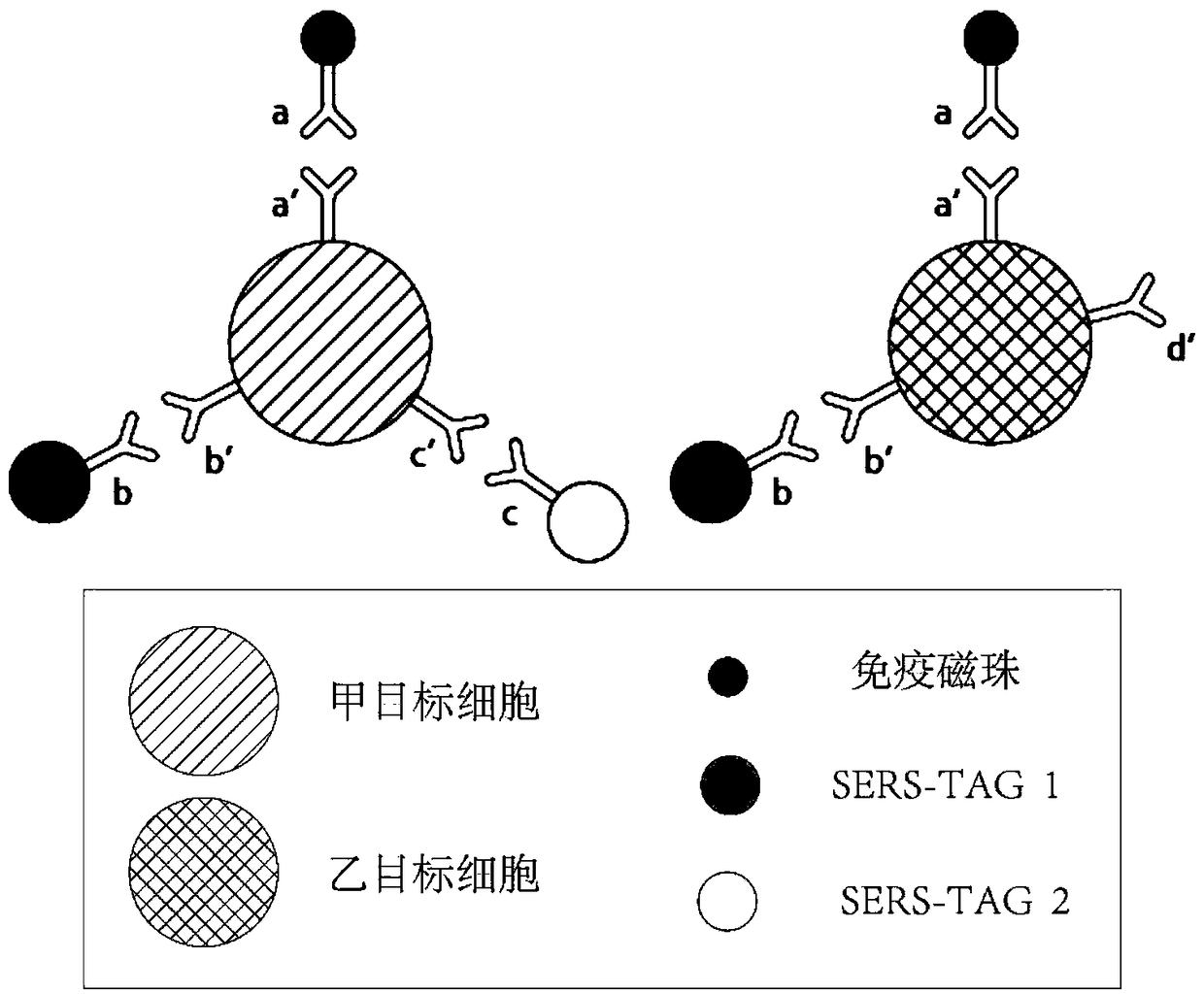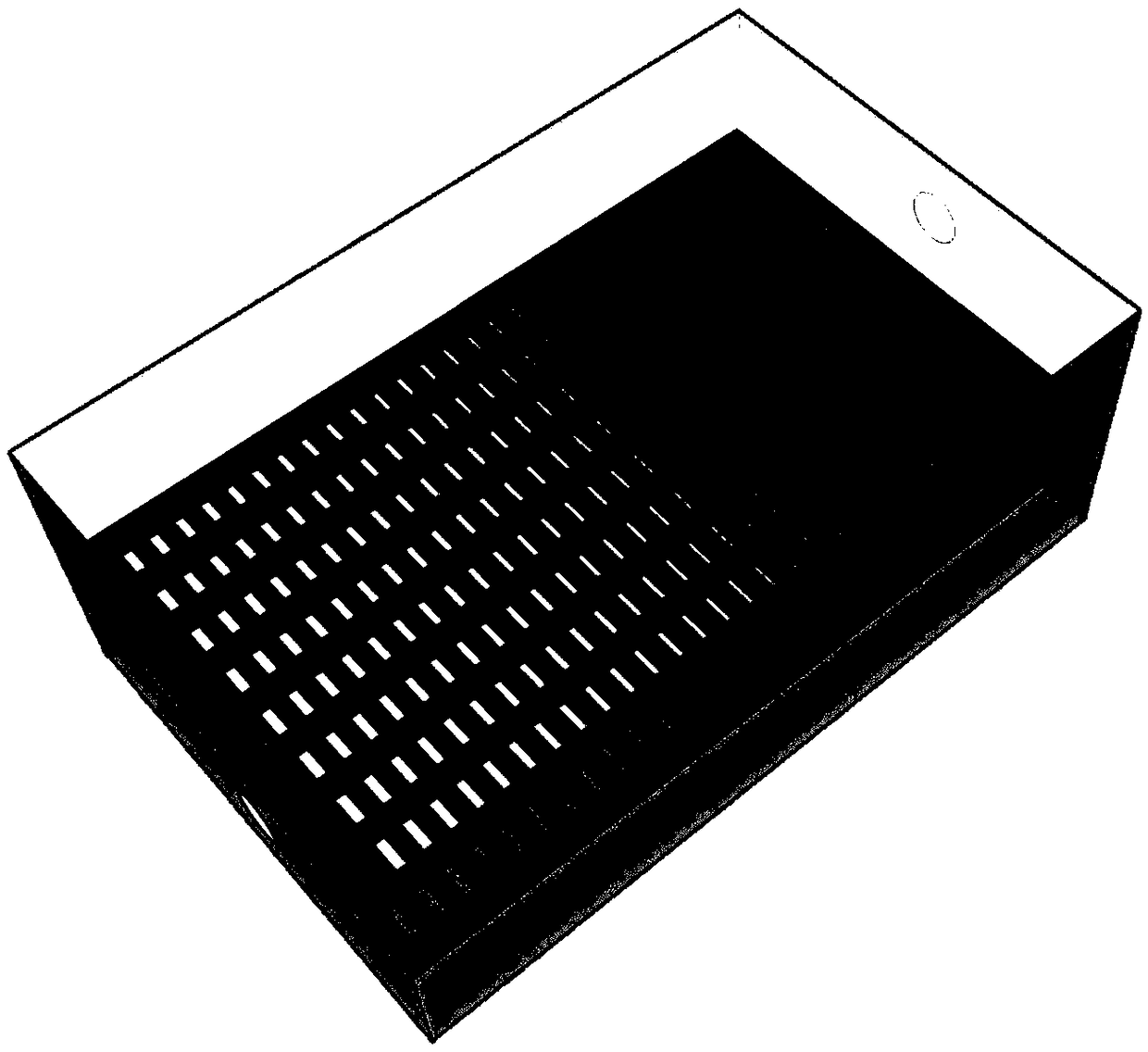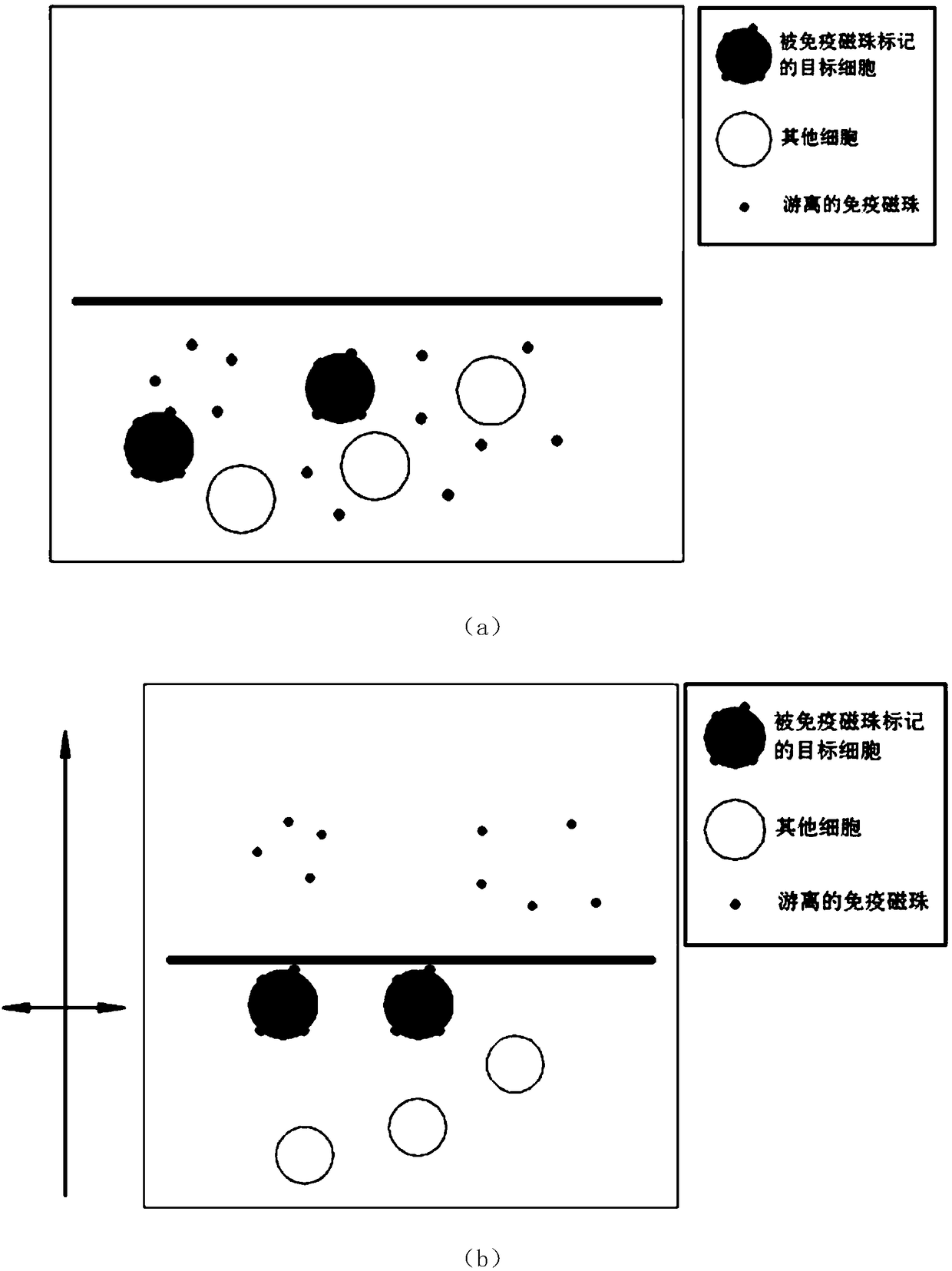Immunomagnetic bead labeling-based SERS sorting method
An immunomagnetic bead and labeling technology, which is applied in the intersection of cell sorting and optical engineering, can solve the problems of difficulty in ensuring successful capture of cells, inability to provide accurate detection of sample information for cancer diagnosis, and unfavorable integration. Cell detection, magnetic cell detection with high signal-to-noise ratio, and the effect of meeting the needs of informatization
- Summary
- Abstract
- Description
- Claims
- Application Information
AI Technical Summary
Problems solved by technology
Method used
Image
Examples
Embodiment 1
[0044] The SERS sorting method based on immunomagnetic bead labeling of the present invention comprises the following steps,
[0045] S1. On the surface receptor unique to each target cell, label the immunomagnetic beads modified with an antibody paired with the surface receptor;
[0046] Taking whole blood cells as an example, assuming that the target cells to be detected include A target cells and B target cells, when selecting surface receptors, it is necessary to select the specific surface receptors on both A target cells and B target cells, that is, A target cells. A surface receptor on both the target cell and the second target cell that is absent on other cells. Such as figure 1 As shown, different from other cells, the specific surface receptors of target cell A are a', b' and c', and the specific surface receptors of target cell B are a', b' and d', then the surface receptors Both a' and b' are unique to both target cell A and target cell B, and one of them can be ...
Embodiment 2
[0080] The difference between embodiment 2 and embodiment 1 is that in this embodiment, transverse oscillation microwaves are selected for transverse oscillation, which are generated by microwave generators. Under the force of transverse microwave, the immunomagnetic beads shake slightly, and the speed and pass rate of the immunomagnetic beads passing through the cell sieve are very high.
Embodiment 3
[0082] The difference between embodiment 3 and embodiment 1 lies in that in this embodiment, lateral alternating water flow is selected for lateral oscillation. The immunomagnetic beads shake slightly under the force of the lateral alternating water flow, and the speed and pass rate of the immunomagnetic beads passing through the cell sieve are very high.
PUM
| Property | Measurement | Unit |
|---|---|---|
| diameter | aaaaa | aaaaa |
Abstract
Description
Claims
Application Information
 Login to View More
Login to View More - R&D
- Intellectual Property
- Life Sciences
- Materials
- Tech Scout
- Unparalleled Data Quality
- Higher Quality Content
- 60% Fewer Hallucinations
Browse by: Latest US Patents, China's latest patents, Technical Efficacy Thesaurus, Application Domain, Technology Topic, Popular Technical Reports.
© 2025 PatSnap. All rights reserved.Legal|Privacy policy|Modern Slavery Act Transparency Statement|Sitemap|About US| Contact US: help@patsnap.com



